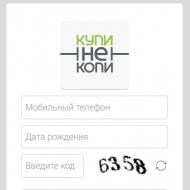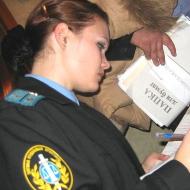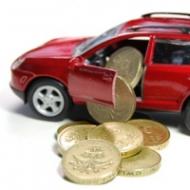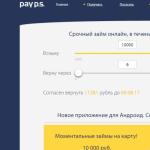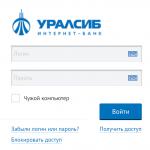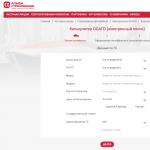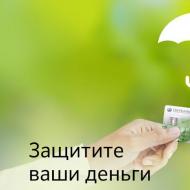
Designation of the currency of different countries. Mira currency designation
On the political map The world today is located about two hundred countries. In each of them its own financial system And monetary policy, part of which remains its own monetary system.
Along with this, in the last 15-20 years there have been cases of refusal of individual countries from their own currency in favor of stronger or supranational. A vivid example here will be the formation of a common European currency (euro), which came to replace the German brand, French Franca, Estonian Crown and other currencies of countries that are part of the European Union. The second reason for the refusal of its own currency was the desire to stabilize the country's finances, to ensure greater attractiveness for investors, reduce the level of inflation due to the actual destruction of their own monetary system. An example here will be Zimbabwe who refused his own dollar in favor foreign currency Due to the giant inflation, which practically deprived the possibility of local money to fulfill their basic functions.
Mira currency designation
Several examples of countries indicating the refusal of their own currency and, accordingly, the opportunity to influence the economy with monetary mechanisms did not reduce the radical number of types of funds. Today, their number is significantly higher than a hundred, so conditional marking of various currencies is used to simplify work with them. This is especially true due to their similar names. So, in a large number of countries, there are dollars, crowns and other types of currencies. The use of a uniform designation of various currencies will allow you to clearly and quickly separate, for example, the Australian dollar from the American, the Norwegian crown from Danish and so on. At the same time, the difference in the courses of the same exchange currencies may be significant.
Currency designation system. The main currencies of the world
To simplify the work of the global financial sector, the development of foreign trade and economic relations Between the countries, the International Organization for Standardization (ISO) adopted a separate standard, providing for the introduction of a unified system for the currency of the world.
Today international Standard ISO includes a letter and digital designation about 150 currencies different countries The world (in reality, their number is larger, but the standard takes into account all the little significant). Of the entire variety of currency, 7 are allocated, which today is considered basic, and the categories of the main 9 more.
Currency Currency Designation
In accordance with the current standards, the alphabetic designation of the world's currencies is as follows:
- US dollar (letter designation - USD, digital designation - 840), which is used as money For calculations in 20+ states of the world. Also american dollar It remains one of the main world reserve currencies (about half of the reserves is stored).
- Euro (letter designation - EUR, digital designation - 978) - Currency of 17 countries that are part of the European Union, which appeared on the cash market in 2002. It is also an important backup. world Currencywhich accounts for about 30% of all reserves.
- British pound (Literal designation - GBP, digital designation - 826) - once the main world currency, which began to lose its value about a century ago. Today, pounds account for about 4% of world reserves.
- Japanese yen (letter designation - JPY, digital designation - 392) - one of the most popular currencies for settlements in Asian countries, thanks to the economic relics of the rising sun.
- Swiss franc (letter notation - CHF, digital designation - 756) - one of the oldest and most reliable currencies, which is valued with its stability due to banking system Countries and significant provision of reserves.
- Australian dollar (letter designation - AUD, digital designation - 036) - currency of the largest economy of Oceania, which is closely related to China, and is one of the most developed worldwide.
- Canadian dollar (letter designation - CAD, digital designation - 124) - Popular currency, thanks to the great influence of the country on world commodity markets, wide use among importers.
- The New Zealand dollar (letter notation is NZD, digital designation - 544) - the currency that Kiwi is often called due to the presence of a bird at bills worth 1 dollar.
In addition to basic currencies, another 9 basic, which are widely used in the calculations, have high stability and good reputation. These include the following funds:
- swedish crown;
- norwegian crown;
- danish crown;
- singapore dollar;
- hong Kong dollar;
- south Korean von;
- south African rand;
- new Israeli Shekel.
Russian ruble. Currency designation
In accordance with the requirements of the International Organization for Standardization, the currency designation consists of three letters (symbols). In the general case, the first two signs define the country, and the third corresponds to the first letter of the immediate name of the currency. If we talk about the Russian ruble, then the currency designation today is RUR. It consists of the following blocks:
- RU is the abbreviated designation of the country (RUSSIA);
- R is the designation of the currency itself.
Unfortunately, the Russian ruble is not included in any basic nor major currencies. The reason in the relatively small amount of the national economy, the underdevelopment of the financial sector (the country has not yet been able to become a regional business center), orientation exclusively on the commodity sector and the predominance of low-hell enterprises. At the same time, the use of basic currencies with foreign trade, even between countries having an excellent monetary unit, significantly reduces the cost of conversion due to the high liquidity of world markets.
Other global currencies are also encoded.
Forex Currency Designation System
The forex currency designation system goes in accordance with ISO standards, which increases visuality for traders and investors working on it, while allowing it to uniquely and clearly identify a specific currency.
The designation of the currencies of the world is used to simplify the type of economic information. Each currency has its own three-digit code, where the first two letters mean the country, and the last third letter is the name of the currency itself (DOLLAR - D, FRANC - F, POUND - P).
It is regulated by such an order of the three-digit currency designation by a special standard ISO 4217. The International Standardization Organization in 1978 recommended all countries to use three-letter and three-digit currency codes.
Symbol of any currency:
The main purpose of this application of the currency designation was aimed at international documentation for international agreements, in which it was more efficient to use the abbreviated names of currency codes to identify their name, since some currencies are sufficiently similar (US dollar, Australian dollar, Canadian dollar, etc.).
Of course, each country has adapted the ISO 4217 standard for their needs. For example, in Russia there is its all-Russian currency classifier. Only the European Union uses the ISO 4217 directly.
The designation of currencies, according to ISO 4217, has been improved several times: digital codes were introduced, data on fractional monetary units were introduced.
In order to facilitate the use of the ISO 4217 standard, the currency designation was displayed in special tables - lists, which indicate the name of the currency, the currency appeal location, three-letter alphabetical code, three-digit alphabetical code, and decimal discharges for monetary units.
It is clear that some currencies come out of circulation, so they are marked in additions to the ISO 4217 standard with explaining the causes of such changes, and the dates of entering and output information.
All changes in the designation of currencies officially publishes a special agency on its website - Six Interbank Clearing in English and French.
The most interesting thing is that during the use of the currency of the world since 1978, all available currencies were practically used, therefore, for new currencies, they came up with the letter N, from the English word - a new one.
Currency codes were needed to automate and unify the designation of currencies, so each country develops them on their own taking into account the ISO 4217 standard.
Currency Currency Designation
| Currency name | Currency code | |
| Australian dollar | AUD. | 036 |
| Austrian shilling | ATS. | 040 |
| Belgian Frank | BEF | 056 |
| British pound | GBP. | 826 |
| Canadian dollar | CAD | 124 |
| Czech krona | CZK. | 203 |
| Danish krona | DKK. | 208 |
| Netherlands Gulden | NLG. | 528 |
| Estonian crown | EEK. | 233 |
| Unified European currency | EUR | 978 |
| Finnish Mark. | Fim | 246 |
| French frank | FRF. | 250 |
| German Mark. | Dem. | 276 |
| Greek drachma | GRD. | 300 |
| Hong Kong dollar | HKD. | 344 |
| Hungarian Forinte | Huf. | 348 |
| Irish pound | IEP. | 372 |
| Italian Lyra | ITL | 380 |
| Japanese yen | JPY. | 392 |
| Latvian lat. | LVL | 428 |
| Lithuanian lit. | LTL | 440 |
| Mexican Peso. | MXN. | 484 |
| New Zealand dollar | NZD. | 554 |
| Norwegian crown | Nok. | 578 |
| Polish zloty | PLN. | 985 |
| Portuguese Escudo. | RTU | 620 |
| Russian ruble | RUB. | 643 |
| Singapore dollar | SGD. | 702 |
| Slovak Krona | SKK. | 703 |
| South African Rand | Zar | 710 |
| Spanish Pestie | ESP. | 724 |
| Swedish crown | SEK. | 752 |
| Swiss frank | CHF | 756 |
| Ukrainian hryvnia | UAH | 980 |
| American dollar | USD. | 840 |
Surely you noticed when filled payment order In his bank that you have currency codes graph: for dollar - 840, euro - 978, russian ruble - 643, Ukrainian hryvnia - 980.
Currency symbols of the world
In addition to currency currencies and codes, currency symbols are still distinguished by currency symbols $, £, ¥, € that you often see in everyday life.


The history of the dollar symbol $ has a number of versions.
The first version states that in 1492, King Ferdinand II Aragonian from Spain approved the symbol with his monetary unit, which was similar to Hercules pillars, lungs.
The second version tells the occurrence of the dollar symbol between 1573 - 1825. In Potosi, who at that time was the biggest industrial Center Peace, and was located on the territory of modern Bolivia. The fact is that the coins that went at the time in the sweat, very much similar to the modern dollar symbol.
The third version tells about the similarity of the modern dollar symbol with a monetary unit with a sisterhood from ancient Rome. The sisterhood was designated as IIS.
And in the fourth version it is assumed that the symbol of $ turned out as a result of the reduction of Spanish PESO. That is, in a single expression, PESO was used abbreviated as PS. Later, PS simplified to one letter S, which simply crossed the missing letter P, and the $ symbol came out.
With other currencies, everything is easier. The designation of the pound £ went from the LIBRA Latin word, which means scales. At that time, the cost of pound was equated with a pound of silver.
The euro currency designation occurred as a result of a sociological survey of the population. That is, the people themselves chose how their national symbol should look like. Euro itself is a very young European currency that was born in 1999. The symbol of €, according to the European Commission, denotes two elements: the significance of Europe in the Greek letter Epsilon, and the stability of the currency in two parallel lines.
The symbol for the designation of the Japanese yen currency - ¥ appeared as a result of applying two parallel lines to the Latin letter. The Japanese are described by the hieroglyph 円.
Most countries of the world with the designation of currencies are not bored with special fiction, and simply reducing the first letters in the name of the country. So, in Poland, zloty are denoted as zł, and the former German milk brand is reduced simply as DM.
Some countries denote their currencies with a symbol that is associated with the dollar. For example, Nicaraguan Cordoba looks like C $.
The designation of the shekel currency in Israel in Hebrew is deciphered as the first letters of the currency name - ₪.
The story of the designation of the Russian ruble indicates that the name of the ruble itself was the first time in the XIII century and meant Pud Silver, which had a weight of one hryvnia and was cut into parts. Over time, the symbol of the ruble changed. In XVII - XIX centuries The ruble was depicted by connecting two letters P and W. Modern symbol The Russian ruble was approved only at the end of 2013 and denotes the letter p with a horizontal line, a supplementing letter R - ₽ (but this symbol is not yet correctly displayed, since such a symbol in Unicode tables appeared quite recently).
Thus, we have dealt with the designations of the currencies of the world, considered signs, codes and symbols of major world currencies.
The world of currency is Pttit variety. These are various banknotes, titles, content and, of course, their infinitely interesting story. It so happened that some types of money became world famous and gained enormous developmental speeds, and some are unknown even to some residents of the country in which it is in walking. In any case, it is easier to navigate in currencies, and especially to facilitate the reading of a huge amount of information in foreign exchange markets and trade reports, there are valve marks. A simple way in one symbol or several, to accurately determine, in whose money is one or another amount.
All signs of currencies of the world have their own unique history, some are intertwined and have interconnections. It is interesting to become not only to distinguish the symbols of money, but also to meet, at least briefly with information about their origin.
$ - US dollar, US dollar
Without a doubt, the most significant currency of the world, however, and his sign is not put in order. There are several assumptions and guesses, how the world currency sign was formed:

₤ - English pound sterling
 The way appeared, any schoolboy in England knows, and beyond it too. The history of his appearance is not a veil or mysterious, everything is extremely simple and concise, as preferred by the British. The symbol ₤ is a compound of the letter L and two parallel lines of crossing it. In turn, L means Libra. Such an explanation, like the symbol, is used not only in relation to the British pound of sterling.
The way appeared, any schoolboy in England knows, and beyond it too. The history of his appearance is not a veil or mysterious, everything is extremely simple and concise, as preferred by the British. The symbol ₤ is a compound of the letter L and two parallel lines of crossing it. In turn, L means Libra. Such an explanation, like the symbol, is used not only in relation to the British pound of sterling.
He was adopted by many countries of the world, which centuries experienced a deep influence on the part of the British Empire were her colonies. So the Libra or Lira sign underlies the basis of currency signs in Turkey and Egypt. Also, you should not forget that Lira is also a measure of weight in ancient Rome, and England has absorbed his culture a huge heritage of the Roman Empire.
€ - Euro, Unified EU currency

The youngest currency of Europe, created as a symbol of the unification of the European Union and is designed to combine the economy different countries, Reduce the load on manufacturers to align price fluctuations in the eurozone. By the way, who is interested -. At the same time, the pressure on the economy is significantly reduced by eliminating currency and exchange operations and transfers between the mills. To determine what will be the euro currency sign, a social survey and a choice between many proposed options, designer solutions. It is a sign combining the letter "C" or more precisely the symbol of epsilon, which symbolizes the importance of all Europe and two parallel lines horizontally indicating the stability and reliability of the euro.
FR - Frank Switzerland
Many signs cash currencies represent composite elements, some symbolisms and even artistic rice elements. In the case of a franc it is not in mom. Everything is extremely simple, according to the first two letters of the name of the monetary signs on Latin and form the symbol of the franc. It is noteworthy that today it is only determined by such a symbol, because in addition to it, the francs on the territory of Europe no longer left, because it is not necessary to identify it. French franc and the rest were replaced by euro. The very name of the money "Frank" has a long history, was known since the 14th century.
¥ - Japanese yen
 In the history of mankind, the signs of currencies of different countries are closely interrelated. So happened with Japanese yen. Native designation - 円 (EN) came to Japan from China, where in due time silver bars, who were in the go, were called yuan. Later, coins brought by Europeans and already coins minted in China appeared. In the future, they were called Western yuan, and got into Japan. Actually yuan and yen is the same thing only in various pronunciations.
In the history of mankind, the signs of currencies of different countries are closely interrelated. So happened with Japanese yen. Native designation - 円 (EN) came to Japan from China, where in due time silver bars, who were in the go, were called yuan. Later, coins brought by Europeans and already coins minted in China appeared. In the future, they were called Western yuan, and got into Japan. Actually yuan and yen is the same thing only in various pronunciations.
The modern symbol ¥ was found to be a Japanese and Ien already by the International Monetary Fund, at the same time when Japan's money was recognized as a reserve currency. In view of the close story with Chinese money, signs are also similar. The difference is only two parallel strips instead of one from the Chinese yuan.
You can familiarize yourself with the full review of Japanese yen.
Ұ - Chinese yuan
The name of money occurred from silver coins, former in the course of the rule of the Qing dynasty. The designation in China itself is performed using the hieroglyphs "元", "圓". The IMF has already introduced an international currency sign Yuan so that it could be easier to perceive by representatives of other cultures and simplify writing.
As mentioned above, the sign of the Chinese currency became derivatives between the silver ingots used for trade and coins brought by Europeans recognized in China. Literal translation can just denote the "round coin".
Russian ruble

Currency Russian Federation - The ruble of the currency sign was officially officially in 2013. Prior to that, only abbreviations "P", "rubles" were used, the option is also attributed when two letters "p" and "y" are used in the method superimposed on each other, and the "P" is rotated 90 degrees counterclockwise.
Now the sign of the ruble is represented as the letter "P" crossed by a horizontal line. The sign approved and received approval, even a mechanism for introducing a symbol in the symbol encodings system and letters for machine writing, but still only read editors can be displayed.
₴ - Ukrainian hryvnia
In modern form, the hryvnia appeared only in the early 90s of the last century, that is, it can be considered a young currency. At the same time, the name of the money "Grivnya" has a long history, which has many centuries. At first, the so-called jewelry, wearable on the patch and used, including for the calculations for the goods. Later so called silver bars. Now this is the national currency of independent Ukraine. Naturally, a sign for the country's money in the form of ₴ is introduced for international communication and designation. This is the capital letter of the currency name r and two parallel features located horizontally, the lines symbolize stability.
X - Kuwaiti Dinar
At one time he became a replacement indian rupee.. Over time, Kuwaiti dinar has become one of. The symbol is indicated by the letter "x", or rather the Roman number "x" (ten), which is fair, because the name of the dinar has deep and old roots. Dynaries were called coins that went to the Roman Empire in their greatness reached and distant Eastern land.
﷼ - Oman Rial
As in many other situations, the name of the national currency of countries is rather not under the influence of their own traditions, but under the influence of the colonial interests of European empires. So Omansky Real took his name from Spanish Real. At the same time, currency signs largely have their own historical roots related to the history and culture of individual peoples. This is happening in relation to the sign of Omansky Real.
According to various statistical bodies and reference information ServicesToday, in the economy of the world, about 157 national currencies are rotated. At the same time, about 80% of international turnover is expressed in one of the 5 -th world currencies having high liquidity. These are the so-called main currencies: US Dollar (USD), Euro (EUR), Japanese Jena (JPY), British pound (GBP), Swiss Franc (CHF). The feasibility of unification in the designation of currencies is obvious:
- This is a simple way for one symbol to quickly and accurately determine, in the monetary signs of which state is presented by one or another;
- Allows you to distinguish currencies, different on the territory of the treatment, but the same by name. Examples: Dollar besides American, there are Canadian, Australian, and others. Monetary signs countries such as Argentina, Cuba, Mexico - Pesos. Confusion should not be;
- If you express the name of the monetary unit using several digits and letters, it will simplify its identification in various information systems;
- Application Currency encoding makes it easier to work with an array of information in foreign exchange markets and shopping exchanges, simplifies bank operationsused to display exchange rates. In accounting and statistical accounting, in the design of various transactions and the conclusion of contracts, and in everyday practice, the use of unified designations has become common to business turnover.
Main money classifiers
All over the world, the standards are also developed in each country in which information about currencies used are systematized. There are global, interstate, national or sectoral classifiers. The global currency standard is ISO 4217. This is an alphabet classifier in which each currency besides the name has been assigned a special code and number. Any currency in it has such characteristics: its name; territory of circulation; Three-letter alphabetical code (Alfa-3); Three digital code (NUMBER-3); The presence and number of decimal discharges at the exchangeless monetary unit. The use of such an encoding is most characteristic of currency quotes. In all reference and information systems, which are essentially derived from this basic standard, the main characteristics of world currencies in the "State / Name / Name / Symbol" format are necessarily present. For example, the European currency is indicated as follows: EC / EUR / EUR / € World standards ISO 6166 (ISIN) and ISO 10962 (CFI) identify securities and applied in the field stock trading. The universal coding system according to the international ISO 10646 (Unicode, Unicode) operates with graphic symbols. The classifier sets out the requirements for symbols and fonts that use the creators of their own currency sign as an image. With international cooperation in the territory of the CIS, the Classifier of the MKV currency is valid. To fill out customs declarations within Customs Union interstate standard of kV TS. In Russia, at the moment in all areas economic activity The directory is used fully corresponding to ISO 4217. This is the All-Russian Currency Classifier OK (MK (ISO 4217) 003-97) 014-2000, approved by the Resolution of the State Standard of Russia No. 405-Art dated 25.12.2000 with the latest change No. 42 of 01.07.2018. In addition to the All-Russian, industry coding applies. In the banking sector there is a CLIInging Currency Currency Currency Currency. And in the federal tax Service In accordance with the KV FTS there is its own internal three-letter alphabetical currency code of the world.
How to create currency signs
By general rule, Currency names can be briefly represented by digital designation, abbreviated name and special signs (symbols). Under the currency code, the digital designation or letter abbreviation is understood. Graphic symbol of money is a currency sign as an image. To denote one or another monetary unit, certain principles of formation are applied:
- The monetary unit of any country has a digital code. It is intended for those countries where they do not use Latin. The rest of the states usually use currency letter designations. For a short name of money, any graphite is used. In writing on the basis of the alphabet - this is the letter or a combination of Cyrillic / Latin letters. In this case, you can take the word entirely or apply the reduction. If the name contains two words, the abbreviation is most often used. In non-alphabetic letters, a syllable sign, a hieroglyph or part of it takes. Montograms, punctuation signs, etc.
- Severally connected graphs form the so-called ligature, which makes the currency designation unique;
- Additionally, special graphic signs or characters can be entered in the designation. This is done to currency unit Finally acquired "his face".
Samples of applied formatting types:
digital code: 756 -Shwiger franc; abbreviation: UAH. from hryvnia; abbreviation: DM - German brand; hieroglyph: 円 - Japanese yen; monogram: ₠ - European monetary unit ECU; symbol (sign): ₪ - Israelis Shekel.
Many world currencies do not have their own abbreviated title record, therefore, they use any combination of transmitted methods. For example, the Australian dollar is denoted by the dollar sign $ a or au $; ₤ M or LM - symbols of the Maltese Lyra. For cases when the currency sign is missing, a universal symbol is provided (¤). The lifted over the row of the circle, from which four beam beaming at an angle of 90 ° relative to each other, denotes any (or some) currency. Specify what national currency We are talking, you can only in the context of the document in which this designation is given.
Use a graphic sign for currency - convenient and prestigious
The short name and special number in the currency codes classifier have a monetary unit of any state. But the sign of its own currency of 195 independent states is only a few dozen of them. Cause in sufficient strict requirements that this symbol must match. They are mandatory for execution for font and designer developers.
Compliance of currency signs Unicode Standard:
- the symbol must be alone and fairly simple. It is not allowed to decorate it. Whatever additional elements - vensels, wavy lines, small strokes, etc.;
- convenience is important when reading and ease in writing - so that it can be identified without any problems even with strong distortion;
- the icon cannot be not clear. It is necessary to fulfill it so that it becomes easily recognizable as citizens of his country and foreigners;
- sustainability with respect to any pin system is another criterion in the designation of world currencies. In other words, the symbol must maintain awareness absolutely in any font system and not to have similarity in any of them;
- the designation being developed should be unique.
Perform such complex requirements - the task is not easy. After all, in the designation of money there is a limit even in the width of the symbol. That is why signs of some currencies may seem uniform on execution and contain repeating elements. For example, in almost all icons you can see one / two vertical or horizontal features. This is a symbol of stability. It is present in such signs as € € € ¥ £ ₴ and others. An explanation of this is - the economy of any mills of the world is striving for stability.

The advantage of using the currency sign are undeniable. This is visualization, simplicity and convenience. A graphic sign does not require translation, saves a place when writing. And to top off to this, the significance of such currency increases at times. The state that could develop, approve and incorporate the unique designation of the currency, of course, raised its prestige at the global level!
From the number and diversity of world currencies in any eyes will be charged. After all, the currency world is not only a variety of coins and bills, but also specific names, as well as a fascinating story that lies for each national monetary unit.
It happened that some types of currencies became almost world, and their development and stability cause sincere admiration. However, there are types of money in which even local residents of the country are weakly oriented, where they are common.
In any case, to simplify the reading of trade reports, facilitating the orientation process among a huge amount of monetary units and information flows with the currency exchange, special designations were invented. After all, this is the easiest way to quickly understand, in what currency the amount is expressed.
Currency designation system
 The term "currency" itself is borrowed from Italian and denotes "Cost". In fact, the currency is a settlement unit of the state.
The term "currency" itself is borrowed from Italian and denotes "Cost". In fact, the currency is a settlement unit of the state.
In order to somehow facilitate the lives of all confiscated to the financial sector, the International Organization for Standardization (ISO) adopted a standard, due to which, any currency of the world awarded a special designation, which made it possible to unify financial activities.
ISO is a leader in the development of any international standards. And according to the standard adopted by it, any global monetary unit received not only a three-digit letter, but also digital.
It should be noted that any power that solved the development of its own currency classification system is always valid, based on the already existing ISO standard.
Main currencies in the world (16 currencies)
IN modern world There are about 200 different currencies and only 150 of them, they fell into an international standard. It should be noted that, along with world currencies, this standard got some more medals and collectible coins.
Among such a set of monetary units of the world, 16 currencies have gained special status, which are now recognized as the main on the market.
These include:

However, it should be noted that only the first 7, of the currencies given in the list, are recognized as basic. This means that they are the main reserve currencies and it is in them that they prefer to create and maintain their gold reserves Many states.
Currency Currency Designation
As mentioned, on any currency market and accompanying financial documentation, you will not find the usual eye of the names. After all, they have long been replaced by a special system designation convenient for perception.
 Thus, the merits of the International Organization for Standardization, each monetary unit received its abbreviated alphabetic designation, consisting of three Latin letters. Accordingly, the first two of them indicate the name of the country, but the latter indicates the name of the currency itself.
Thus, the merits of the International Organization for Standardization, each monetary unit received its abbreviated alphabetic designation, consisting of three Latin letters. Accordingly, the first two of them indicate the name of the country, but the latter indicates the name of the currency itself.
If you look at the All-familiar USD abbreviation (US dollar), then you will understand that the US is United States (USA), and the letter D denotes the name of the currency itself - Dollar. The same principle acts in relation to the names of other currencies.
Currency signs of the world
However, the majority more than once faced with other options for the designation of world currencies. Undoubtedly, we are talking about the sign of the currency. This is a much more efficient and concise way to display the currency type, moreover, many signs are not one dozen signs, or even a hundred years, and have their impressive history.
However, few people know (the exception is the financial sphere specialists) that the overall expression of all world currencies looks likewise.
Of course, each of the main currencies has its own symbolic expression, although it makes sense to stop at the "basic" currencies.
- $ - US dollar
- € - Euro
- £ - British pound
- ¥ - Japanese yen
- ₣ - Swiss franc
It is immediately noticeable that most of the characters are trying to include horizontal screenshots. And it is no coincidence. After all, the presence of such constituents has always served as a symbol of stability and reliability of the currency.
Currency codes of the world and their designation
In addition to alphabetic expressions, any type of currency also has its own digital code. Perhaps you have a bewilderment, why such a variety is needed, however, everything has its own hidden meaning.
Since it should be expected, the use of digital code facilitates certain currency transactions.
As for the designations themselves, the codes of major world currencies look like this:
Naturally, any currency has its own employment history and a mass of features worthy of more close study. However, I want to believe that the information provided is great to you, significantly expanding the boundaries of your presentation about this area.

